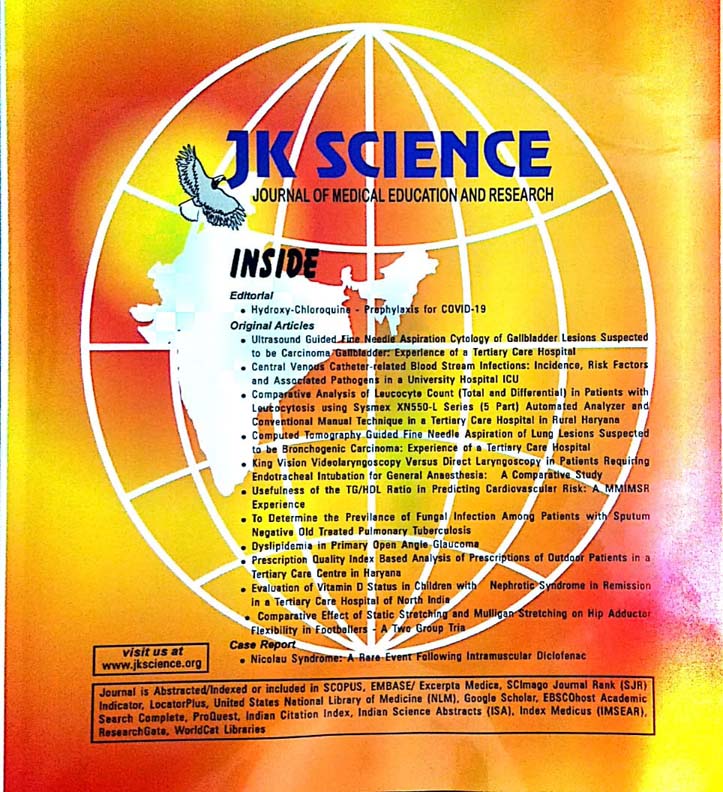Analysis of Two Different Suturing Methods in Laparoscopic Pyeloplasty
Keywords:
Ureteropelvic junction, Pyeloplasty, Laparoscopic, SuturingAbstract
Background: Ureteropelvic junction (UPJ) obstruction is the most common congenital anomaly of the urinary tract (1 in 20,00 live births). Laparoscopic pyeloplasty has equivalent success rates with open pyeloplasty. We prospectively analysed techniques of transperitoneal laparoscopic dismembered pyeloplasty and compared clinical outcome between two groups using two different suturing methods (continuous and interrupted).
Material and Methods: After obtaining ethical clearance from Institutional Ethical Committee, the present prospective study was conducted on 33 patients over the period of two years in the Post-Graduate Department of General Surgery in a tertiary care hospital.
Results: In our study the commonly involved age group was 20-29 years. (57.58%) in both interrupted as well as in continuous group and mean age for continuous and interrupted suturing was 26.23 ± 6.961 and 27.50 ± 6.619 respectively with male predominance. The mean duration of suturing, mean duration of surgery, mean duration of drain, mean drain output, and Hospital stay in continuous group are 72.74 ± 3.194 min, 203.75 ± 12.457 min, 2.26 ± 0.452 days, 13.42 ± 4.730 ml, and 3.26 ± 0.452 days respectively and in interrupted group are 94.14 ± 3.505 min, 234.50 ± 10.761 min, 4.43 ± 0.646 days, 40.93 ± 7.043 ml and 5.43 ± 0.646 days respectively. Urine leak was the only postoperative complication occurring in (3.03%) in interrupted group. The total success rate in our study was 100% with no postoperative anastomotic re-stricture during the follow-up.
Conclusion: Continuous suturing may be preferred to interrupted suturing for ureteropelvic anastomosis in patients undergoing laparoscopic pyeloplasty with comparable results and good intraoperative and postoperative parameters.
Downloads
Downloads
Published
How to Cite
Issue
Section
License
Copyright (c) 2023 JK Science: Journal of Medical Education & Research

This work is licensed under a Creative Commons Attribution-NonCommercial-ShareAlike 4.0 International License.





